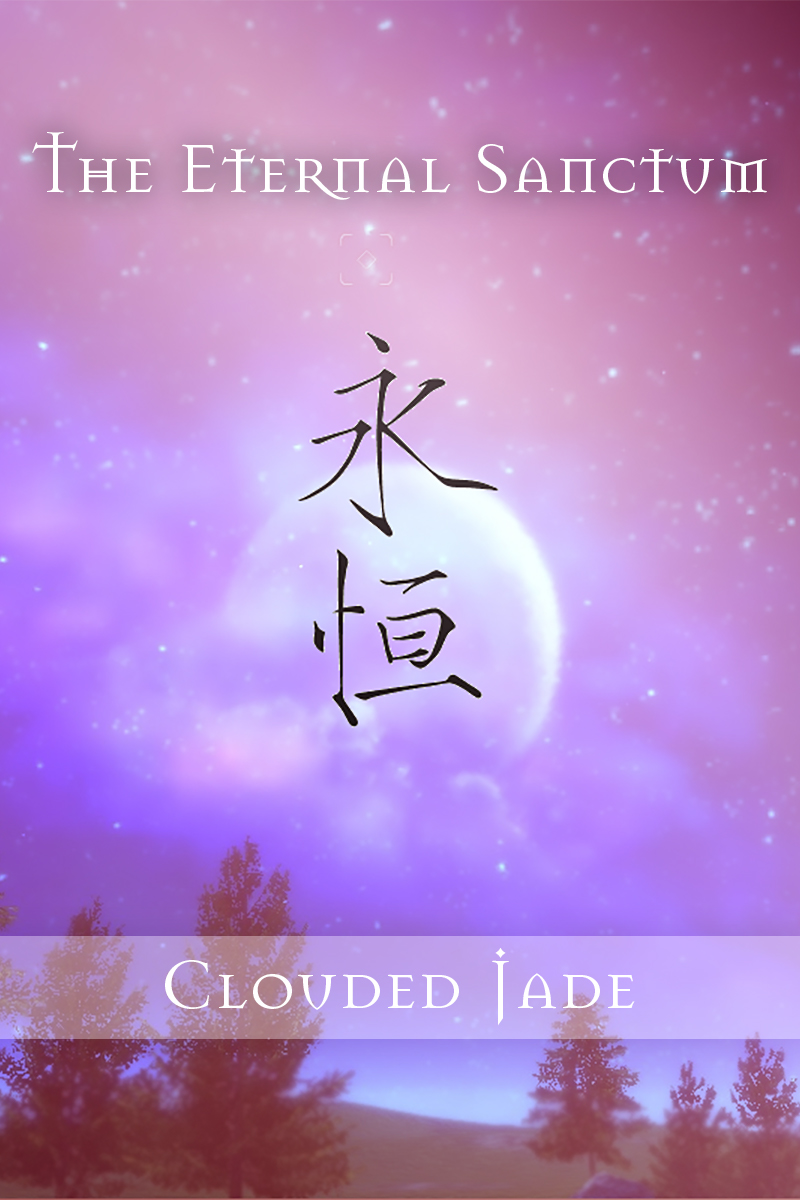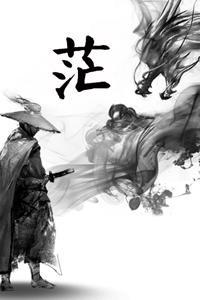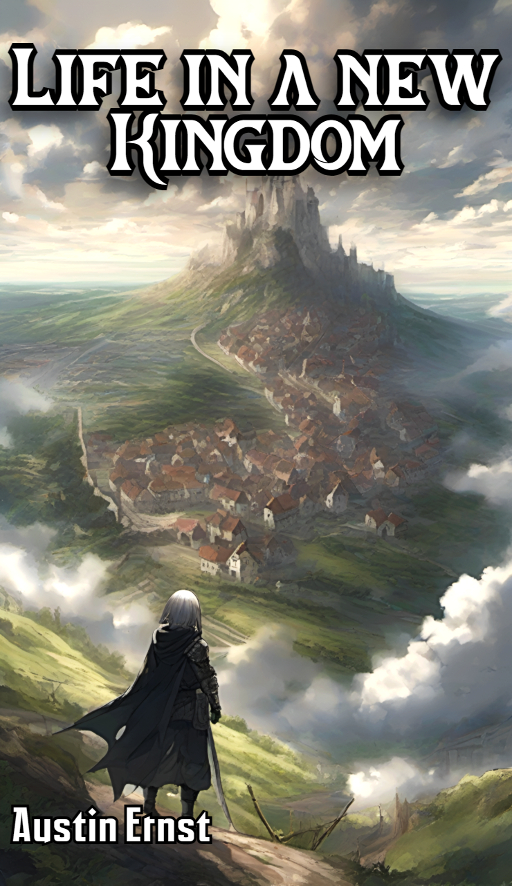Of the things I can impart onto you, my successor, the information regarding the Swarming Hunt is likely to be the most valuable, as it is the most dangerous thing you will encounter during your travels in the Rift. As well as that I required the entirety of my million quadralents to learn these surface level details, so if I am to die before I complete this journal, I do not want my time to go to waste.
No one knows where the Swarming Hunt came from, but every one of my predecessors agree that the phenomenon is made by sentient hands. Previous explorers have documented tirelessly about the oddity that is the genetic code of the Swarming Hunt’s members. The genetic code of the members of the Hunt is much too deliberate for it to be natural, and every aspect of it lacks the ‘footprints,’ for lack of a better word, of previous evolutionary ancestors. However, I am getting ahead of myself. As you likely know, some members of the Hunt can look too dissimilar from each other to be the same species, which poses the question: How are they all part of the Hunt if they are nothing alike? The answer is that, at the heart of the Hunt, there is not an independent species, but an all encompassing virus. The virus feeds off of sentient energy, or soul as some more mythical species say, and uses it to strengthen themselves. To fulfill this purpose, the virus infects random animals and slowly transforms them into members of the Swarming Hunt. It is for this reason that few of the members look similar, it is because they are from different worlds altogether.
Now, this likely brings up another question: what is the life cycle of a Swarming Hunt herd? The answer is relatively simple, to be frank. In this explanation, I will assume that the hypothetical herd we are focusing on has just been wiped out directly after they spread their virus to the local fauna population. As unlikely as such a scenario is, as I have only heard of such things in stories in the journals of a previous explorer, it demonstrates the behavior of the Swarm in the event that a batch matures alone.
The hypothetical story begins when a batch of creatures reach maturity. This event marks the beginning of a new Swarm in this case due to the lack of a previous Swarm to take care of the new swarm. The signs of a creature becoming part of a Swarm include many physiological changes. These changes can include sudden growth of new limbs, growth of new vision organs, growth of hardened scales or chitin, and a creature becoming extremely blue, among other potential changes. The one physiological change that is guaranteed is the sudden extreme growth in size of a creature; an insect can grow to the size of a human, for example.. Apart from physiological changes, the new Swarm members gain the ability to fly using a new organ in their bodies.
The first thing that happens once a new Swarm is created is that all of the strongest animals-turned-Swarm members call out to the island, demanding that every other member follow them. There would likely be challenges to the Huntmaster’s control, but a simple demonstration of their power or Ether capabilities dissuades most challengers. Now that a new Swarm is made, their first movement is to find the nearest place where a world will break into the Rift. They can spend whole years doing nothing but flying through the Rift, but they have no need to eat, sleep, or maintain any other function of biological life. Once the Swarm reaches their hunting grounds, they wait on nearby islands for the dimension to collapse. Once the fateful day arrives, they slaughter every and all sentient beings on the island and consume them. They are able to eat any form of sentient energy, from disembodied souls to sentient machines. Despite their voracity, however, they are able to be fooled. A vessel for a soul being wrapped in Ether with the exact same density as the air present in the Rift can fool an entire Swarm with ease. Of course, to do something such as this would require a complete understanding of both the Hunt and the Ether around the aspiring survivor to do purposely and an affinity with the vague concept of luck to do incidentally. Of course, due to the literal infinite size of the Rift, it is inevitable that some lucky people slip past the Swarm.
Once a Swarm has completed their hunt and has bathed the new island with blood, they move on. After a few more hunts, some members of the Swarm evolve, so to say, and become more powerful. I will go into the five categories I created for the members of the Swarm later. Anyway, this pattern of traveling and hunting continues for a few hundred thousand years. During this time, the Swarm could be slaughtered by another Swarm due to a fight over food, assimilated into another Swarm because of a Huntmaster leading a different Swarm while our focus case lacks one, or it could even have its members be picked off by Rift-Walkers, a concept I will delve more into at a later date.
No matter what, a Swarm loses members due to conflicts with other Swarms or the occasional battle with Rift-Walkers (A dimension’s standing force has no chance at battling a Swarm, as they are like gods to anyone not Riftborn, another concept for later). To replenish their numbers, a Swarm does not breed like any other normal species, but they find a large Island rich in local Fauna and begin to spread their virus to them. It takes hundreds of years, and they cannot move from that Island, but the virus eventually takes over a new group of animals, turning them into members of the Swarm that created them. This cycle continues for time eternal until the Swarm is annihilated by some Rift-Walker army or is subsumed into another Swarm.
The only other thing worth mentioning to a beginner, as I assume you are, is the 5 types of Swarming Hunt members. There are technically 6, but counting the last one as a separate group is pointless.
- Strays: A type of Hunt member that has been abandoned for one reason or another and roams the Rift, looking for a new Swarm to join or Rift Walkers to consume
- These will likely be the most consistent threat anyone who travels the Rift will have to consider. Running into a Swarm, of any size, is a death sentence if one is not near a Life Clock and able to dimension jump. Despite it being your most common reminder of the Swarming Hunt, the strength of Strays varies. You can have anything from a young Hound attacking you to a Behemoth Huntmaster chasing you. It all varies depending on what creature you catch the attention of.
- Hounds: The beginning stages of a Swarming Hunt creature. These are either newly born or incredibly weak creatures that are the weakest of the Swarm.
- If you find a Hound as a Stray, then you either have a trivial problem or the beginnings of a nightmare. It is not uncommon for Hounds to be the vanguard of Swarms, so if a Hound has found a target, then the Swarm will converge on the target, invariably shredding them to pieces. Otherwise, they are weak. They are between 7-20 feet long at their largest metric.
- Packmasters: The evolved version of a Hound. A Packmaster has eaten at least a dozen sentient beings, and can somewhat command Hounds, as long as the Huntmaster allows them to do so.
- These creatures are little more threatening than a Hound if found as a Stray, but are nightmares if surrounded by Hounds. For beings that physically cannot become sentient due to the virus consuming any seeds of sentient energy, members of the Swarm can become very smart. A Packmaster can effectively coordinate groups of Hounds 20 large with the skill of an experienced officer. Do not take them lightly if you have trouble dealing with Hounds, as they are named by other, less studious Rift Walkers as ‘Hound Heralds.’ They are between 20-30 feet long at their largest metric.
- Hunters: This is the line between the cannon fodder and the warriors. Unlike the previous groups, who simply use their teeth, claws, or other appendages to damage the enemy, Hunters specialize. They either refine their bodies to either make themselves better at physical combat, or they become able Ether manipulators, though this second type is rare.
- If you encounter a Stray Hunter, then you must be confident in your combat abilities; if you are not confident, then pray to whatever god your world worships that a Life Clock is nearby, otherwise, there is no way to outrun a Hunter. Similarly to Packmasters, Hunters are able to command Hounds, but they are also able to command Packmasters as well. From my experience, and the notes left behind by my predecessors, members of the Hunt become exponentially more capable to command members as they evolve, so the Hunters are even more capable than Packmasters. They are between 30-75 feet long at their largest metric.
- Hands of Slaughter: As much as I would like to change the name of this category, I have committed myself to using the original names given to each type of Hunt member by the party of the first Explorer. Either way, Hands of Slaughter are the direct subordinate of a Huntmaster, and are commanded directly by them. They further specialize their bodies to fit the role they have made for themselves. The roles include:
- Berserkers: Capable of slaughtering any enemy in front of it, but causes great collateral damage as well. Huntmasters usually use these members as vanguards against other Swarms, as hunting normal sentient beings would likely cause enough damage to the surroundings that they crush the sentient being in question.
- Maws: They are nothing but giant floating balls of flesh with a mouth. They are used against any potential enemies
- Ether banks: These types are usually only seen in the company of Ether-focused Huntmasters, as their sole purpose is to act as batteries for any Ether-based Hunters or Hands of Slaughter.
- Seers: The main Ether-based Hands of Slaughter sub-type. They are creatures with predominant eyes and arms, making them more capable of aiming and using Ether-based attacks. There are as many sub-sub-types as there are ways to use Ether, so listing them would be pointless. Suffice it to say that Seers are your most dangerous enemy when dealing with groups of Hunt members.
- There are more, minor variations to each sun-type, but they are not distinct enough to be their own sub-types. Obviously, there are more subtypes out there, but it is hard to find new types without dying in the process. In general, if a Hand of Slaughter is a Stray, run or make a trap, because there is no way that I know of to fight these enemies without serious preparations. They are between 75-150 feet long at their largest metric.
- Huntmasters: These are almost entirely unique creatures, as they have somehow gained control on the virus inside of their bodies, allowing for them to re-forge their bodies into whatever shape most suits their hunting style. Previous evolutions are able to only nudge the evolution in one direction or another, but cannot decide everything entirely, but Huntmasters can do such things. In nature, Hands of Slaughter are supposed to be the final evolution, but Huntmasters defied such a notion. Here are some of the types of Huntmasters I have seen or heard of:
- Behemoths: A standard type of Huntmaster that simply grows their size to an extreme degree, making them stronger and tougher than gods (another subject for later) but are incredibly lacking in intelligence and Ether control.
- Manipulators: The Ether-based version of a Behemoth. As good at using Ether as a Behemoth is strong.
- Thread-master: A unique Huntmaster that was once a monstrous spider. Once it became a Huntmaster, it learned how to use its threads in combat by reinforcing them with Ether. I do not suggest fighting this Huntmaster. Engaging in frontal combat leaves the attacker open to traps while engaging in a sneak attack is exactly what the creature was good at before it became a Hunt member.
- Boulder Golem: Another unique Huntmaster that was once a living boulder. The creature is able to use Ether to detach parts of its body to use as weapons. It has a hard outer shell, but from what I have gathered, the only reason it is still alive is that it has never encountered an opponent strong enough to contest it.
- The Gazer: Little is known about this unique Huntmaster other than the fact that it is hundreds of feet long and has one black eye. Only one of its abilities are known to myself or my predecessors: it is able to divert a small amount of sentient energy into another non-sentient being, causing it to slowly gain sentience over hundreds of years, at which point it uses the original energy to track the newly sentient being to consume.
- Huntmasters are something that no one wants to find. Run if you find one. They are also able to assimilate other Swarms as long as they do not have a Huntmaster in them. A Swarm’s Huntmaster can be determined by what cry the whole Swarm emits. The Huntmasters can be just about any size, even smaller than Hounds, which makes them dangerous adversaries to fight.
The only other fact that is needed when dealing with the Swarming Hunt is that if any member dies, their bodies evaporate, leaving nothing but bones. I have no idea why this was added to the genetic code of the virus, but I cannot be too picky. Being drowned in hundreds of gallons of blood is not fun. I know from experience.
*=====*
Another city, another marvel, another empire. I’ve seen so much that it feels boring. I just want to go back home. I met a group of Rift-Walkers the other day. It was nice to have some company, but I just feel like I have finally gotten bored of everything. I feel tired. I wonder what my world looks like. I hope it’s at least peaceful.











